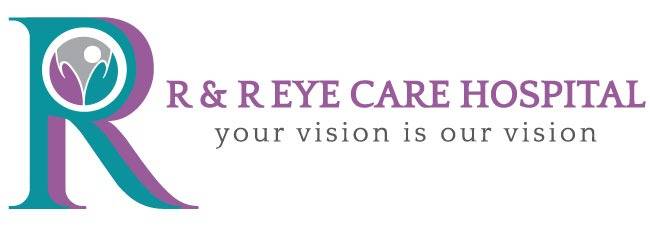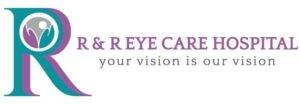Best Paediatric Ophthalmology & Squint Surgery in Mumbai
As parents, we want nothing but the best for our children, especially when it comes to their health and well-being. However, when vision issues arise, it’s essential to understand the condition and seek appropriate treatment. In this blog post, we’ll delve into the world of paediatric ophthalmology, focusing on one common condition: Strabismus, also known as squint. We’ll explore its causes, symptoms, diagnosis, treatment options, potential consequences of leaving it untreated, associated disorders, and why R & R Eye Care Hospital is the ideal choice for paediatric eye care.
What is Paediatric Ophthalmology Squint (Strabismus)?
Paediatric ophthalmology squint, or strabismus, is a condition where the eyes are misaligned and point in different directions. This misalignment can be constant or intermittent and may affect one or both eyes. Strabismus can develop in children as early as infancy and requires prompt evaluation and treatment to prevent long-term vision problems.
Causes of Strabismus:
Several factors can contribute to the development of strabismus in children, including:
- Muscle Imbalance: Weak or imbalanced eye muscles may cause the eyes to drift out of alignment.
- Refractive Errors: Uncorrected farsightedness, near-sightedness, or astigmatism can lead to eye strain and contribute to strabismus.
- Neurological Conditions: Certain neurological disorders or injuries to the brain can affect the control of eye movements and cause strabismus.
Symptoms of Strabismus:
The most apparent symptom of strabismus is the misalignment of the eyes. Other symptoms may include:
- Double Vision: Seeing two images instead of one.
- Eye Fatigue or Strain: Complaints of eye discomfort or headaches, especially after prolonged visual tasks.
- Amblyopia (Lazy Eye): Reduced vision in one eye due to the brain ignoring signals from the misaligned eye.
Diagnosis of Strabismus:
Diagnosing strabismus involves a comprehensive eye examination by a paediatric ophthalmologist. The exam may include tests to assess visual acuity, eye alignment, and eye movements. Specialized tests such as a cover test or prism test may also be performed to determine the extent and type of strabismus present.
Treatment of Strabismus:
Treatment for strabismus may include:
- Eyeglasses or Contact Lenses: Correcting refractive errors to alleviate eye strain and improve alignment.
- Eye Patching: Occluding the stronger eye to encourage visual development in the weaker eye (amblyopia treatment).
- Vision Therapy: Exercises and activities to improve eye coordination and strengthen eye muscles.
- Surgery: Surgical correction may be necessary to realign the eye muscles and restore proper eye alignment.
Outcome of Leaving Strabismus Untreated in Children:
Leaving strabismus untreated can have several consequences, including:
- Permanent Vision Loss: Untreated amblyopia can result in irreversible vision loss in the affected eye.
- Social and Emotional Impact: Strabismus may affect a child’s self-esteem and social interactions due to teasing or difficulty making eye contact.
- Developmental Delays: Visual problems associated with strabismus can impact a child’s learning and development, including reading and academic performance.
Disorders Associated with Strabismus in Children:
Strabismus may be associated with other eye conditions or disorders, including:
- Amblyopia (Lazy Eye): Reduced vision in one eye due to lack of use or abnormal visual development.
- Refractive Errors: Uncorrected near-sightedness, farsightedness, or astigmatism can contribute to strabismus.
- Neurological Disorders: Certain neurological conditions or brain injuries may affect eye muscle control and cause strabismus.
Strabismus vs Squint: Is There a Difference?
In medical terminology, the terms “strabismus” and “squint” are often used interchangeably to describe the misalignment of the eyes. Both terms refer to the same condition where the eyes do not point in the same direction.
Why Choose R & R Eye Care Hospital for Strabismus Treatment?
R & R Eye Care Hospital is a trusted leader in paediatric ophthalmology, offering compassionate care and advanced treatment options for children with strabismus and other eye conditions. Here’s why R & R Eye Care Hospital is the ideal choice for paediatric eye care:
- Expert Paediatric Ophthalmologists: Our team of experienced paediatric ophthalmologists specializes in diagnosing and treating eye conditions in children, including strabismus.
- Child-Friendly Environment: We understand the unique needs of children and strive to create a welcoming and comfortable environment for young patients and their families.
- Comprehensive Treatment Options: From routine eye exams to advanced surgical interventions, we offer a wide range of treatment options tailored to meet the individual needs of each child.
- State-of-the-Art Facilities: Our hospital is equipped with the latest technology and equipment to ensure accurate diagnosis and effective treatment of paediatric eye conditions.
Conclusion: Restoring Clear Vision and Bright Futures:
Strabismus can impact a child’s vision, development, and quality of life, but with early diagnosis and appropriate treatment, the outlook is promising. At R & R Eye Care Hospital, we are dedicated to providing the highest standard of care for children with strabismus, helping them achieve clear vision and a bright future. Schedule a consultation with us today and take the first step towards optimal eye health and well-being for your child.




Leave A Comment